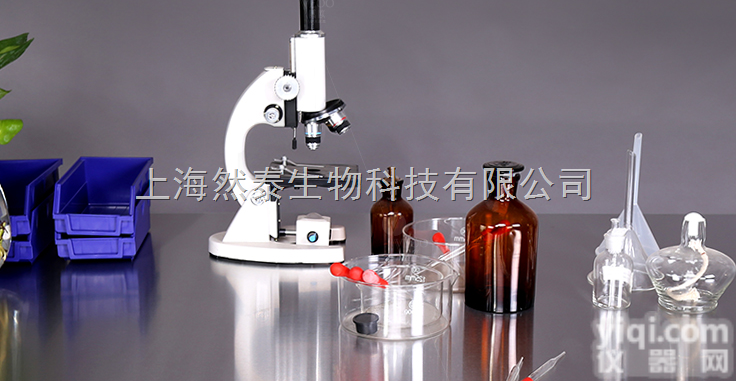CRL-1848 NCI-H292 人肺癌细胞(淋巴结转移)
ATCC® Number: CRL-1848™
Designations: NCI-H292 [H292]
Depositors: AF Gazdar
Biosafety Level: 1
Shipped: frozen
Medium & Serum: See Propagation
Growth Properties: adherent
Organism: Homo sapiens (human)
Morphology: epithelial
CRL-1848 NCI-H292 人肺癌细胞(淋巴结转移)
Source: Organ: lung
Disease: mucoepidermoid pulmonary carcinoma
Cellular Products: keratin; vimentin
Permits/Forms: In addition to the MTA mentioned above, other ATCC and/or regulatory permits may be required for the transfer of this ATCC material. Anyone purchasing ATCC material is ultimay responsible for obtaining the permits. Please click here for information regarding the specific requirements for shipment to your location.
CRL-1848 (淋巴结转移)
Virus Susceptibility: Hepatitis B virus
Tumorigenic: Yes
DNA Profile (STR): Amelogenin: X
CSF1PO: 10
D13S317: 11,12
D16S539: 9,13
D5S818: 13
D7S820: 10
THO1: 8
TPOX: 8,11
vWA: 16,17
Cytogenetic Analysis: This is a human cell line with near-diploid chromosome counts. The modal chromosome number was 47, occurring in 36% of cells. The rate of cells with a higher ploidy count was 3.9%. Twelve markers were common to most cells. Among them were del(1) (q32.1), der (5)t(5;13) (p15.33;q11), i(5p), der(1)t(1;?) (p34.3;?) and der (6)t(6;7) (p25.3;q21.2). All markers were present in single copy per cell. Normal N1 and N6 were absent. There were two normal X chromosomes. No other abnormalities were detected.
Age: 32 years
Gender: female
Ethnicity: Black
Comments: This line was derived from a lymph node metastasis of a pulmonary mucoepidermoid carcinoma.
The cells were isolated in a chemically defined medium (HITES) and later adapted to growth in media supplemented with serum.
The cells retain their mucoepidermoid characteristics in culture as determined by their ultrastructure and expression of multiple markers of squamous differentiation.
The cells support the growth of hepatitis B virus and are negative for L-DOPA decarboxylase.
The line has been selected as a prototype for transfecting human subgenomic fragments into human cells for studying the role of HBV and its individual genes in the pathogenesis of viral hepatitis and liver cancer.
The cells stain positive for keratin and vimentin and are mucicarmine positive but are negative for neurofilament triplet protein.
Propagation: ATCC complete growth medium: The base medium for this cell line is ATCC-formulated RPMI-1640 Medium, Catalog No. 30-2001. To make the complete growth medium, add the following components to the base medium: fetal bovine serum to a final concentration of 10%.
Temperature: 37.0°C
Atmosphere: air, 95%; carbon dioxide (CO2), 5%
Subculturing: Protocol:
Remove and discard culture medium.
Briefly rinse the cell layer with 0.25% (w/v) Trypsin- 0.53 mM EDTA solution to remove all traces of serum that contains trypsin inhibitor.
Add 2.0 to 3.0 ml of Trypsin-EDTA solution to flask and observe cells under an inverted microscope until cell layer is dispersed (usually within 5 to 15 minutes).
Note: To avoid clumping do not agitate the cells by hitting or shaking the flask while waiting for the cells to detach. Cells that are difficult to detach may be placed at 37°C to facilitate dispersal.
Add 6.0 to 8.0 ml of complete growth medium and aspirate cells by gently pipetting.
Add appropriate aliquots of the cell suspension to new culture vessels.
Incubate cultures at 37°C.
CRL-1848 (淋巴结转移)
CRL-1848 (淋巴结转移)
 CRL-1848 NCI-H292 CRL-1848 NCI-H292 人肺癌细胞
CRL-1848 NCI-H292 CRL-1848 NCI-H292 人肺癌细胞
 CRL-1848 NCI-H292 人肺癌细胞
CRL-1848 NCI-H292 人肺癌细胞
 CRL-1848 NCI-H292 人肺癌细胞
CRL-1848 NCI-H292 人肺癌细胞
 人肺癌腺细胞GLC-15细胞 人肺癌腺细胞GLC-15细胞
人肺癌腺细胞GLC-15细胞 人肺癌腺细胞GLC-15细胞
 人肺癌株细胞,MSTO-211H细胞 人肺癌株细胞,MSTO-211H细胞
人肺癌株细胞,MSTO-211H细胞 人肺癌株细胞,MSTO-211H细胞
 人肺癌腺细胞 人肺癌腺细胞
人肺癌腺细胞 人肺癌腺细胞
 Lsc-035细胞小鼠杂交瘤细胞(抗人小细胞肺癌),ATCC细胞
Lsc-035细胞小鼠杂交瘤细胞(抗人小细胞肺癌),ATCC细胞
 小鼠杂交瘤细胞(抗人小细胞肺癌) atcc细胞
小鼠杂交瘤细胞(抗人小细胞肺癌) atcc细胞
 GLC-15细胞:人肺癌腺细胞系 复苏培养细胞ZX
GLC-15细胞:人肺癌腺细胞系 复苏培养细胞ZX
 GLC-15细胞:人肺癌腺细胞系 复苏培养细胞平台
GLC-15细胞:人肺癌腺细胞系 复苏培养细胞平台
 GLC-15细胞:人肺癌腺细胞系 细胞专注复苏培养
GLC-15细胞:人肺癌腺细胞系 细胞专注复苏培养
 GLC-15细胞:人肺癌腺细胞系 复苏培养细胞
GLC-15细胞:人肺癌腺细胞系 复苏培养细胞